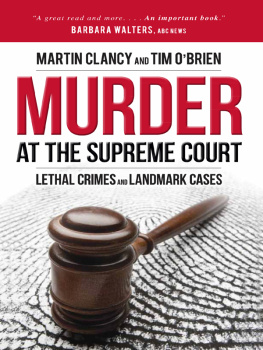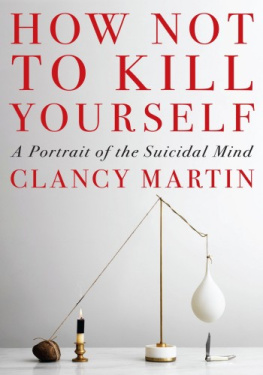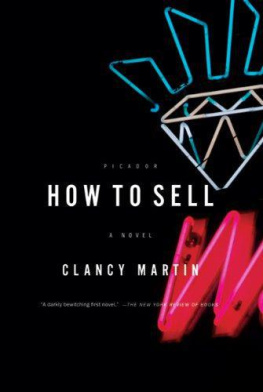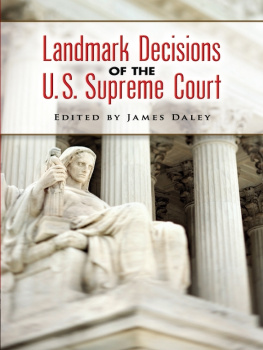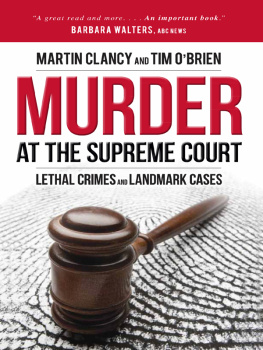
MARTIN:
We started talking about this book more than twenty years ago, but until recently it was all talk, no work. The catalyst, for both of us, was the gentle prodding of Mary Dee Clancy. She never stopped asking, Well, how's it going? Eventually, we simply had to get going.
Tim and I have strong wills and often-divergent opinions, but our partnership has flourished, in television and now in print, because of mutual respect and a deep friendship. We both love chasing stories. Tim has spent years learning the law and the courtsand how to keep my writing legally kosherbut he was born a reporter. Reporting has always been my first love, too, and this book gave me an opportunity to focus on it without worrying about cameras, lights, or satellite feeds. I did miss the network expense account.
Journalism is a collaborative business, and the debts I owe to others would fill another book. I've been incredibly lucky to work with such icons as Fred Friendly, Shad Northshield, and Barbara Walters, and alongside many enormously gifted people with less recognizable names, all of whom have been generous in sharing their insights and their knowledge. My career is the sum of many talentsand many of them aren't mine.
At ABC, Roone Arledge, David Burke, and Av Westin helped me enormously. David Sloan, who has a gift for bringing out the best in his colleagues, has been a believer and a motivator from the day I met him. Bill Moyers and I met at PBS almost forty years ago; he has been a teacher, an inspiration, and a treasured friend ever since.
David Birenbaum and Tom O'Herron were kind enough to read drafts of this book, offering gentle corrections and sage advice; they are responsible for many improvements, but Tim and I are solely responsible for any errors that survive. Also absolved in the error department, but included in our enthusiastic applause, is the supportive creative team at Prometheus Books: Mariel Bard, Melissa Shofner, Cate Roberts-Abel, Brian McMahon, and the man with the prescience to make the purchase, Steven L. Mitchell.
I owe a special debt to Bill Peterson and to a group I think of as the Saturday Morning Irregularsa tight group of friends who regularly provide encouragement and ruthlessly discourage self-importance. My son, Ty, is a powerful motivator; my guiding star is the aforesaid Mary Dee Clancy.

TIM:
Mary Dee Clancy never asked me, How is it going? But instead of saying Hello, she would always greet me with a warm, loving smile and simply whisper, Well? I knew what she meant.
While Mary Dee was indeed the catalyst, our work at ABC News made this book possible. I was particularly blessed by the carte blanche the network gave me to hit the road whenever I wanted to cover virtually any Supreme Court case I perceived to be newsworthy. For more than twenty years, they never said no. Not once. Such luxury was unheard of in network news then, just as it is today. The resulting experience has enhanced my appreciation of the breadth and beauty of our country; it has deepened my respect for our Constitution and for the justices who dutifully seek to interpret it; it has enriched my life, personally and professionally. I am duly thankful.
Ben Sherwood, the president of ABC News, made it possible for us to include pictures and content from stories we have covered over the years and to link to many of those stories at abcnews.com. We are grateful to Sara Just and Sarah Burke for their generous help and uncommon diligence in digging out and organizing the material; their professionalism was matched only by their patience.
I am also grateful to the PBS broadcast Religion and Ethics Newsweekly, which has been my home (well, one of them) over the past decade. Working with executive producer Arnie Labaton and executive editor Bob Abernethy, I've had the professionally gratifying experience of putting together in-depth reports on a wide range of issues. Two of those issueswhether to allow the death penalty for juvenile offenders and whether to allow it for child molestersare now topics of chapters in this book. Arnie and Bob have also agreed to allow us to use pictures taken from those reports, and we thank them for that. I particularly thank them for their support, guidance, and friendship over the years.
Special thanks to Kathy Arberg and her terrific staff in the press office at the Supreme Court. Kathy and I go back a long way at the Court, long before any of the current justices were even there. I thank her not only for her assistance on this project, but also for the many kindnesses she has shown me and the professionalism she has demonstrated to everyone over all those years.
Martin and I began our journalism careers together in local television news in Washington, DC, more decades ago than either of us care to admit. I am pleased to get back with him again on this book. His reputation as a skilled writer and producer is legendary within the network. His editorial experience is vast. My background has been exclusively in gathering and writing news stories. Doing so for television, perhaps more than any other medium, requires the reporter to be both precise and succinct. Efforts at precision and succinctness in legal reporting, however, run the risk of producing a work that reads more like a statute than a story. While I take great pride in my handle on both the facts and the law of the cases I cover, my coauthor's assistance was indispensable in translating legal abstractions into comprehensible stories. There is no legalese in this book. Martin has spared you, not I.
We are both grateful to our friend and agent Ron Goldfarb, who linked us up with Prometheus Books, a publisher that shares our approach to combining great stories with great issues. Ron made it happen, and we look forward to continuing the relationships with him and Prometheus Books long into the future.
I am, as all who know me attest, most indebted to my wife Petie, to whom my efforts here are now dedicated. She has been a constant source of encouragement and support in this and all my endeavors. There wouldn't be a book without her. There wouldn't be anything. Forty-two years and counting, still loving every minute of it. Here's to you, Pete.
Finally, we are grateful to you, the reader, for purchasing this book. Please continue the conversation with us at: http://murderatthesupremecourt.com

Martin Clancy and Tim O'Brien
Washington, DC
January 2013.
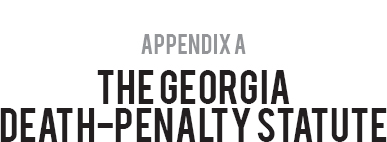
The U.S. Supreme Court's opinion in Gregg v. Georgia made the Georgia death-penalty statute a model for other states. It is reproduced below. The Court's comments about the statute have been retained, the italics are from the original document, and the original footnotes have been converted to endnotes.
II
Before considering the issues presented it is necessary to understand the Georgia statutory scheme for the imposition of the death penalty. Ga. Code Ann. 26-1101, 26-1311, 26-1902, 26-2001, 26-2201, 26-3301 (1972). The capital defendant's guilt or innocence is determined in the traditional manner, either by a trial judge or a jury, in the first stage of a bifurcated trial.
If trial is by jury, the trial judge is required to charge lesser included offenses when they are supported by any view of the evidence.
Next page
